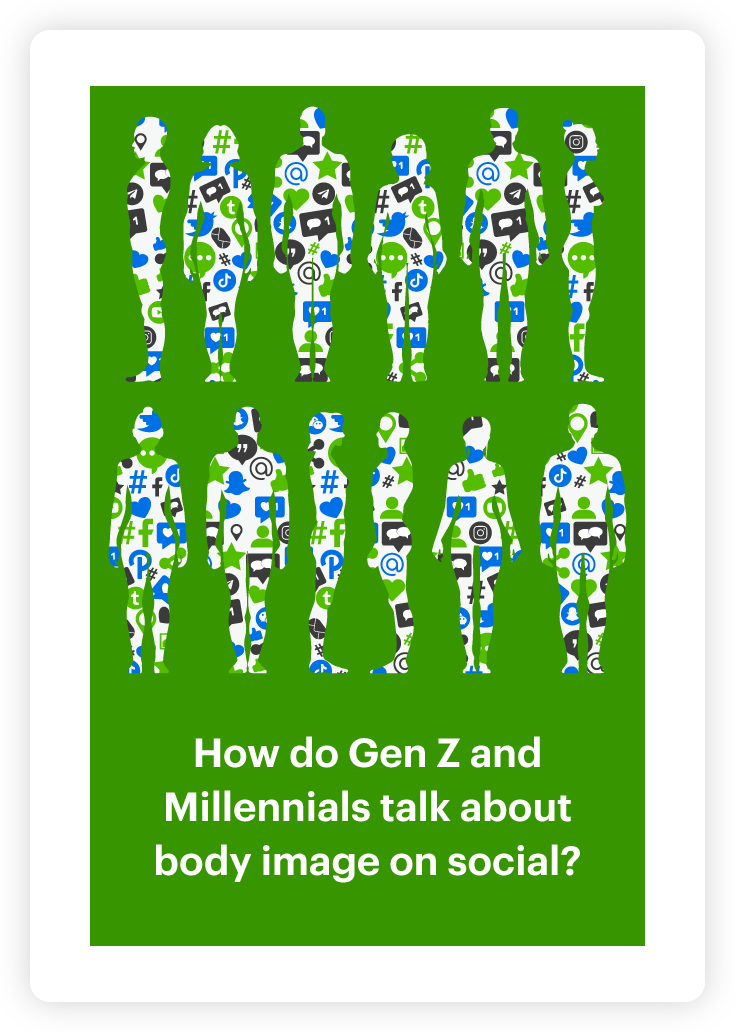Analyzing fan reactions to Netflix’s F1: Drive to Survive
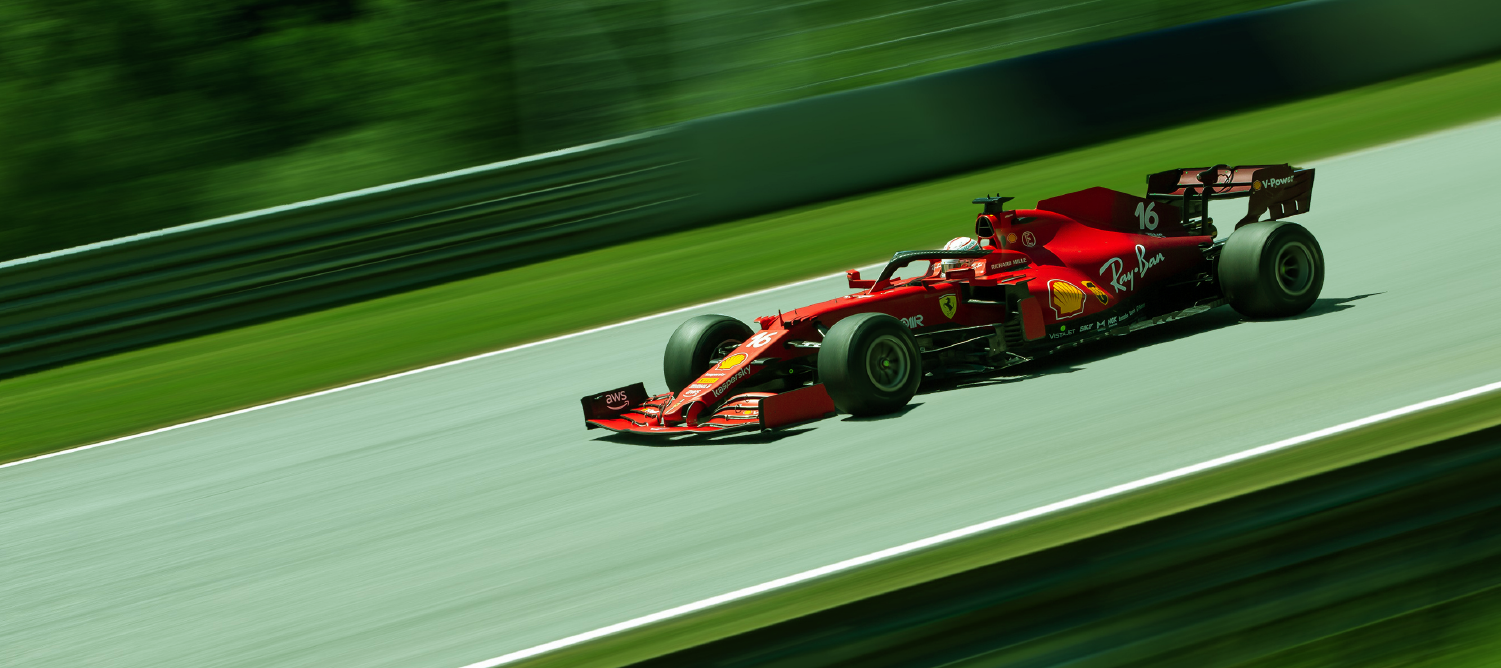
When Netflix began producing its Formula 1: Drive to Survive documentary series in 2018, it set out to capture the drama and danger of racing the world’s most decadent tracks. Since then, the series has cultivated an entirely new fandom and broadened F1’s audience demographics.
With the newest season of Formula 1 just around the corner, we wanted to understand more about F1 fan reactions to Drive to Survive. So, we turned to text analytics.
Relative Insight Explore helps brands and agencies get under the skin of their target audience, providing an effective way to quickly analyse huge amounts of text data in minimal time. Through comparison, Relative Insight Explore pinpoints the linguistic features that are more prevalent in one data set over another.
In this case, we ran a social media listening data search for mentions of ‘F1’ and ‘Netflix’, or ‘Drive to Survive’ over the past year and uploaded this data to Relative Insight. We compared social conversations to our database of standard English, which represents regular word usage. This type of analysis will highlight which words, phrases, topics and emotions are over indexing in conversations, helping us to uncover key themes and opinions around the Netflix hit.
Converting F1 fans
When speaking about Drive to Survive on Twitter, we found that phrases such as new fans and never watched were over indexing, appearing 24.6x more than standard English use. This emphasizes the success of the Netflix docuseries in targeting new audiences and expanding Formula 1’s fanbase. People who had never watched an F1 race in their lives are now engaged viewers – all thanks to the Netflix partnership.
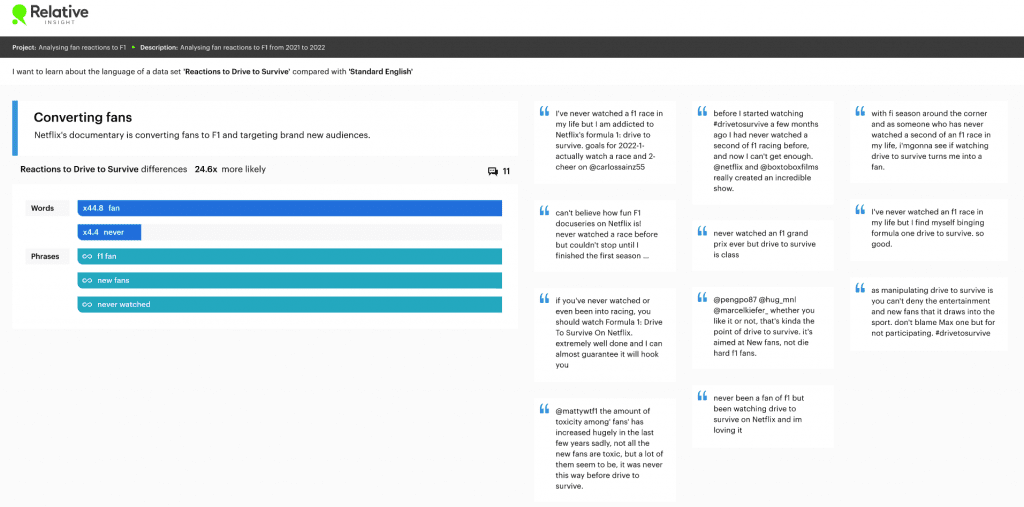
Drama fueled action
It goes without saying, the latest season of Drive to Survive was packed with drama. From new driver pairings to the title race between Lewis Hamilton and Max Verstappen, there was certainly a lot to unpack. We found that F1 fans used exaggerated language such as epic, insane and crazy to describe the action taking place on Drive to Survive.
However, a key insight was the use of words like drama and dramatic. Some viewers complained that the latest series was simply too much – an opinion that has also been echoed by F1 drivers. Mercedes team principal Toto Wolff, world champion Max Verstappen and McLaren driver Lando Norris have all accused the show of creating tension and rivalries that simply didn’t exist. This illustrates how analyzing social data can highlight areas of the show that could be improved by production teams.
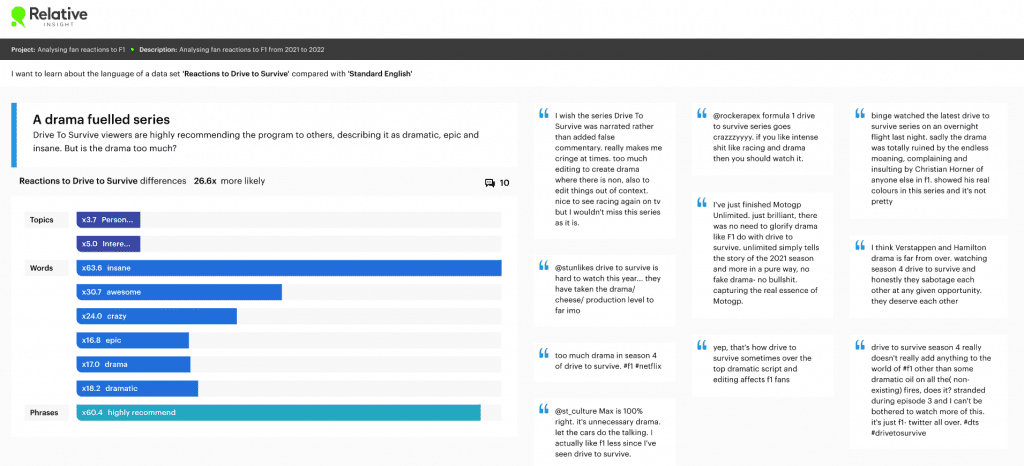
Dirty driving
With so much drama, we can obviously expect a huge range of audience opinions. After watching how the 2021 F1 season ended – Hamilton and Verstappen on equal points in the final grand prix of the year, the championship coming down to the very last lap of the race – many people claimed it to be rigged, unfair and dirty for the sake of entertainment.
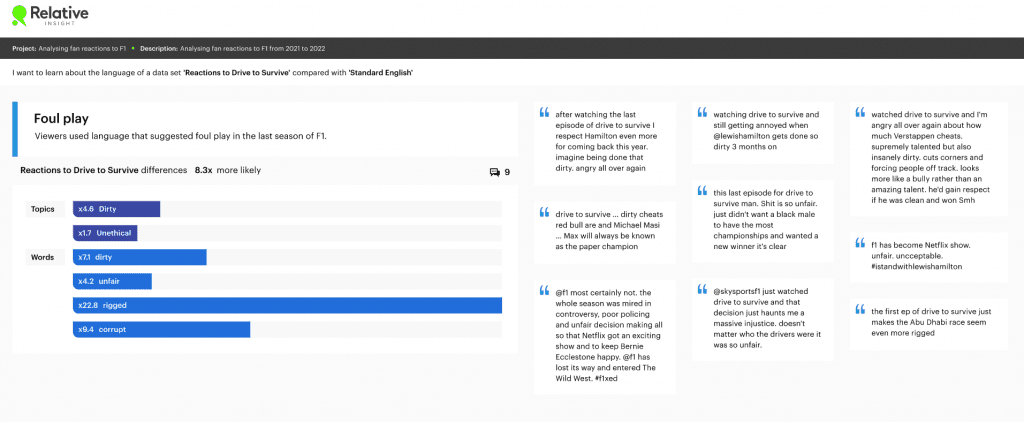
This was a common opinion seen in F1 fan reactions, as Drive to Survive has been accused of exaggerating rivalries between teams for dramatic effect. Furthermore, viewers used the word villain to describe Red Bull’s team principal, Chris Horner, again emphasizing how manipulative editing can influence and reinforce audience opinions.
Car specifics
Although dramatic storylines were a key point of conversation, it’s interesting to see that F1 fans were also keen to talk about the way motorcars are engineered. Twitter users spoke about wheels, engines and steering suggesting that the show helped pique interest in the mechanics of driving an F1 car.
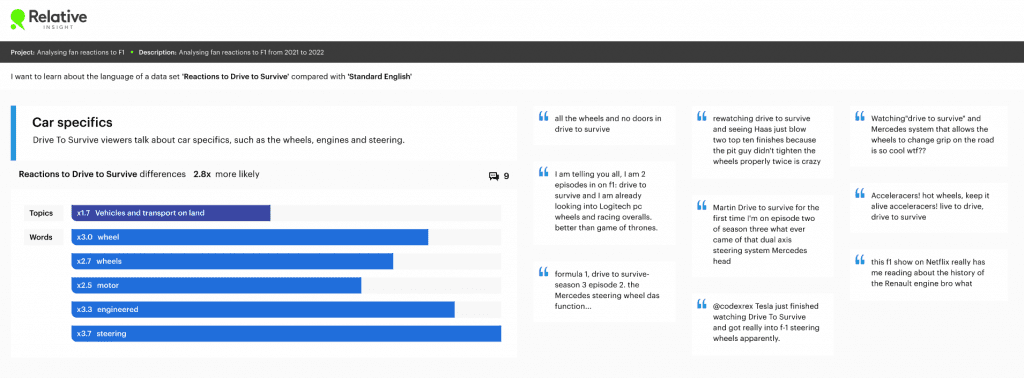
Checkered flag
For both Formula 1 and Netflix, this audience analysis uncovers key insights about F1 audience demographics and F1 fan reactions to Drive to Survive. Clearly, the program has galvanized a new wave of F1 fans, which is great for sports popularity.
However, Netflix must remain aware of the influence it has on how new fans view different teams, principals and drivers. New viewers have flocked to the series for its exciting storylines and high entertainment value, but excessive editing and narrative fabrication could alienate drivers and longtime fans.
